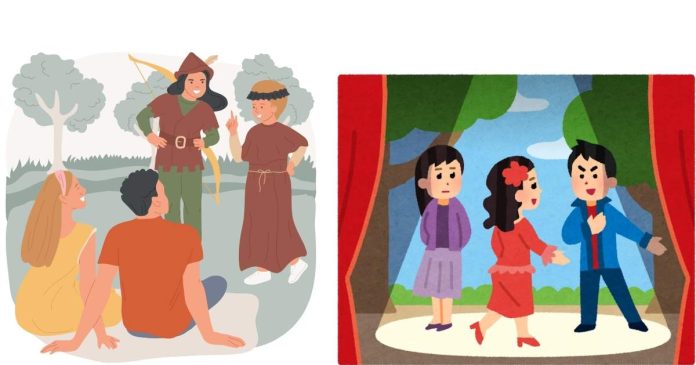The terms “skit” and “play” are often used interchangeably, but they refer to distinct forms of theatrical performance with different characteristics, purposes, and lengths. Understanding the differences can help performers, writers, and audiences appreciate the unique qualities of each. Let’s break down the differences between a skit and a play.
Definition of a Skit
A skit is a short, informal performance that is often humorous or satirical in nature. Skits are usually concise and focus on delivering a specific message, joke, or situation in a few minutes. They are commonly used in:
- Comedy shows
- School events
- Religious gatherings
- Social or political commentary
Key Features of a Skit:
- Length: Skits are typically short, lasting anywhere from a few seconds to 10–15 minutes.
- Purpose: Their primary goal is to entertain, make a quick point, or elicit laughter.
- Simplicity: Skits often require minimal props, sets, and costumes.
- Cast Size: They usually involve a small cast and straightforward dialogue.
- Immediacy: Skits are often spontaneous or loosely rehearsed and focus on instant impact.
Example: A group of students performing a comedic skit about exam stress during a school talent show.
Definition of a Play
A play is a longer, more structured theatrical performance that tells a complete story or explores a theme in depth. Plays are scripted productions performed by actors, typically in a theater or on a stage. They are a central component of dramatic arts and can range from light-hearted comedies to serious tragedies.
Key Features of a Play:
- Length: Plays are significantly longer, often running from 30 minutes to several hours.
- Purpose: Plays aim to entertain, provoke thought, or provide dramatic storytelling.
- Complexity: Plays often include elaborate sets, detailed costumes, and intricate staging.
- Plot Structure: Plays typically have a well-developed narrative with acts and scenes.
- Cast and Crew: They require a larger cast, technical crew, and sometimes musicians or other performers.
Example: Shakespeare’s Romeo and Juliet is a classic play exploring themes of love and tragedy.
Key Differences Between Skits and Plays
| Aspect | Skit | Play |
|---|---|---|
| Length | Short (a few minutes) | Long (30 minutes to several hours) |
| Purpose | Quick entertainment or humor | In-depth storytelling or drama |
| Complexity | Simple, minimal props | Elaborate sets and staging |
| Cast Size | Small, often 2–4 performers | Larger cast and technical crew |
| Rehearsal | Informal or brief preparation | Extensive rehearsals |
When to Choose a Skit vs. a Play
- Skit: If you need a quick, engaging performance for a talent show, classroom activity, or comedic relief, a skit is the perfect choice.
- Play: For a more immersive experience or to explore complex themes and characters, a play is the ideal medium.
Conclusion
While skits and plays both belong to the world of theatrical arts, they serve different purposes and are suited to different contexts. Skits are brief, humorous, and straightforward, while plays offer a more elaborate and in-depth exploration of stories and emotions. Understanding these distinctions helps performers and audiences alike appreciate the diverse forms of theatrical expression.
Related posts:
- What does ringing in the ears mean spiritually?
- What Colors Do Blue and Green Make?
- How Long Does Raw Chicken Really Last in the Fridge?
- What are some amazing and memorable Valentine’s Day ideas that will leave a lasting impression?
- What is the definition of ‘friends with benefits?
- What is the difference between a bachelor’s and a degree?


